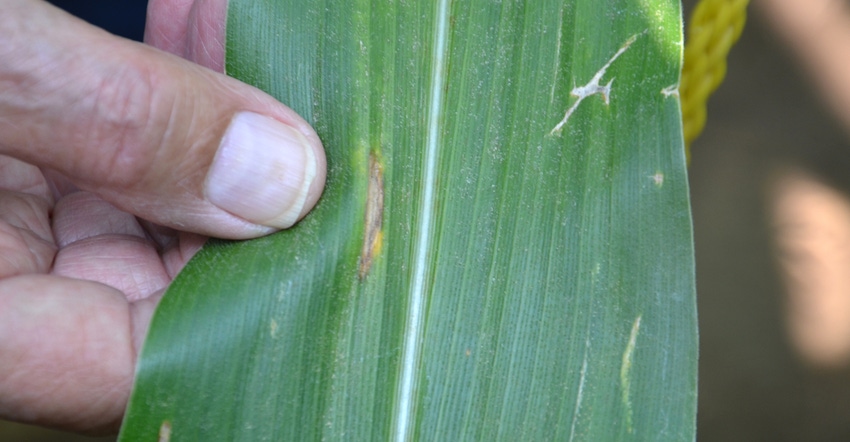
Dave Nanda’s article about spraying fungicide on corn drew reaction from some people who believe in scouting for disease, monitoring it and spraying only if necessary. This is often referred to in academic circles as Integrated Pest Management.
They make a fair point. Nanda, director of genetics for Seed Genetics Direct, sponsor of Corn Watch ’22, doesn’t believe in applying more chemicals than necessary. However, the question of whether to spray fungicides on corn has evolved into a dilemma with several different angles.
On one hand, if you adhere to scouting and only spraying when necessary, this may seem like a wait-and-see season. Dry weather through June across most areas resulted in few observations of disease lesions. As of June 27, there were no detectable lesions in the Corn Watch ’22 field.
However, corn brought into a county fair for crops judging the same day in south-central Indiana exhibited a very small number of tiny lesions. Small but present. Ideally, corn with so few lesions at waist-high stage would be labeled wait-and-see for spraying fungicide.
2-sided issue
Here’s the flip side of “wait and see.” “If the farmers don't plan ahead for spraying fungicides, in many cases, they can’t get a firm commitment from the companies that spray the fungicides,” Nanda says. “I know this from my personal experience of working with some large growers. Sometimes, they can’t even get the chemicals in time if they didn’t speak for them ahead of time.”
Word from others within the seed industry is that Nanda is on target with those comments. Helicopters and airplanes can be extremely difficult to line up, even with reasonable notice. Trying to find someone to spray your fields at the last minute can be frustrating, people report.
The other 800-pound elephant lurking around this issue is weather. Will it stay dry or shift to wetter conditions? In 2021, a wet July gave way to an extremely dry August. Will a dry June turn into a wet July or wet August in 2022? If rain returns, will disease pressure pick up later in the season? Will it be soon enough to cause considerable damage to yield potential?
“At this time, we don’t know how the weather will be in August or September,” Nanda says. So, you’re making a decision with some of the most critical information missing if you’re tying the “spray or no spray” decision to whether you believe weather favoring disease will return.
At least one source in the seed industry believes fungicides can provide other benefits besides disease control, including better stalk strength and the ability to better withstand stress. And even with hybrids with reasonable to good resistance to foliar diseases, if competitive hybrids are sprayed with fungicide in the area, he believes his hybrids are at a disadvantage if they’re not sprayed.
What’s the bottom line? There is no clear-cut answer. Nanda suggests doing what seems to work best for your operation over time.
About the Author(s)
You May Also Like




